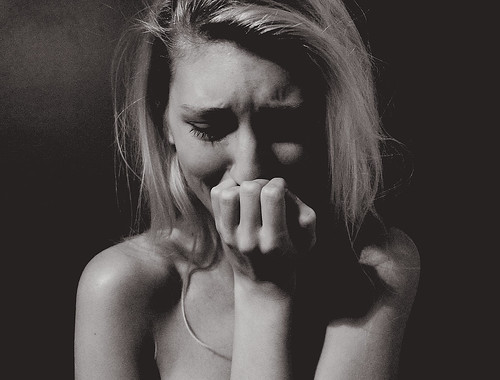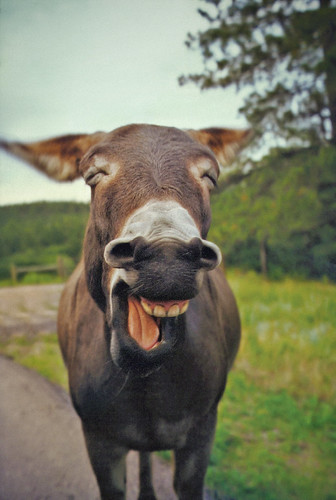
Writing sad scenes can be one of the trickiest things to perfect.
It’s so tempting to just tell the reader that your protagonist ‘was sad’, or bring the tears out in an attempt to show the reader emotions.
Both should be avoided.
Hold back the tears…
I know what you’re thinking; we cry when we’re sad, right?
Wrong. Well, not really wrong. I mean, sure, it happens from time to time; just not at every little thing. We don’t cry when the lawnmower breaks down, or cry when we stub our toe. We fight the tears. We feel a growing lump in our throat, and a stinging in our eyes. Everything around us becomes irrelevant… see where I’m going with this?
By listing just a couple of the internal sensations usually associated with sadness, I think I’ve created a more effective expression of the emotion already. Crying is, believe it or not, hard to relate to in fiction. In anything other than the most perfect scene, it can come across as bewildering and out of place.
Only bring the tears out when the character is at an absolute breaking point.
Make tears seem like a desperate last resort; an act of frenzy in impossible circumstances. That way, by bottling the emotions for the rest of the novel, it’ll make for an even more satisfying – and touching – release when it comes to writing sad scenes.
In defence of the emotionally fragile…
“But what if my character is genuinely sensitive?”
Well, there are exceptions, of course. If your character is suffering for one reason or another, then tears are fine, as long as they are consistently implemented.
As a real-life example of how tears can be used to effect, take a scene from my What We Saw manuscript. Without giving too much away: Adam, the character who likes to come across as a little bit of a tough-nut, cries about something whilst lying in bed. Liam, the protagonist and narrator, is thrown by this, and does not know how to react. Adam isn’t aware that Liam has noticed him crying, so it makes for an interesting dynamic, whereby the reader is able to voyeuristically ‘spy’ on Adam’s emotional release at the same time as Liam.
Adam does have a very valid reason to cry much more than he does, of which I won’t go into yet (tease!), but I feel that the battle to contain and suppress his sadness ultimately makes for a more moving book than if he were breaking down every few minutes. Breaking down is tiresome, so avoid using it repeatedly.

If you’re struggling to ‘show’ emotion, think about your own feelings.
This doesn’t just apply for writing sad scenes, but for other emotions, too. Do you always laugh when you’re happy, or do you sometimes just feel your lips quivering at the sides, resisting a smile? Do you really growl when you’re angry? Are you a tiger?
Becca Puglisi and Angela Ackerman have written a great book on how to show, and not tell, effectively. It’s kind of a thesaurus of emotional responses, so it can be a great resource if you’re trying to put across an emotion. Thanks to Stuart Meczes for the tip on this one! His debut novel, The Awakening, is free for a few days, by the way, so do check it out.
What have we learned about writing sad scenes today?
- Hold back the tears when expressing emotion, and try to identify alternatives
- Make sure your character is at a breaking point if they cry, for full effectiveness
- Showing the repression of emotion is often more effective than showing emotion
How do you go about writing sad scenes in your novels or stories? Which books have brought you to tears, and how did they manage to do so?
Crying girl image via Shandi-lee Cox, and laughing donkey (it’s brilliant, isn’t it?) image via Jackson Carson
I hope I’ve done my hard-bitten female character justice. She begins the novel as a pragmatic professional, but after meeting her (future) romantic interest – a notion she scoffs at – her emotions are forced into an increasing pendulum swing that alternates between love and anger in growing increments. Only at the very end, when she faces losing her mortally-wounded lover (spoiler alert?) does she cry over him.
I well up each time I re-read the chapter – is that wrong? 🙂
Thanks for the excellent links – I’ve downloaded the Puglisi and Ackerman book this evening, as well as a related book that Amazon recommended; ‘Rivet your readers with great Point of View.’ Hopefully it will add strength to my 1st Person POV story.
Write on!
Thanks for the comment Andrew; that certainly sounds intriguing to me! Be sure to keep in touch regarding the progress of your novel. I look forward to reading it!
The Puglisi/Ackerman book really is a great resource. I’ll be sure to check out the POV book too.
Happy writing!